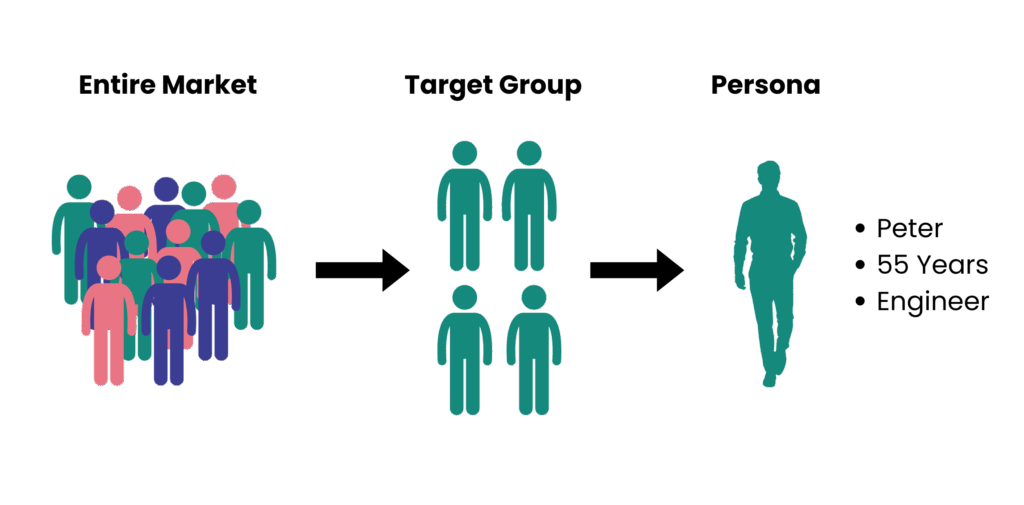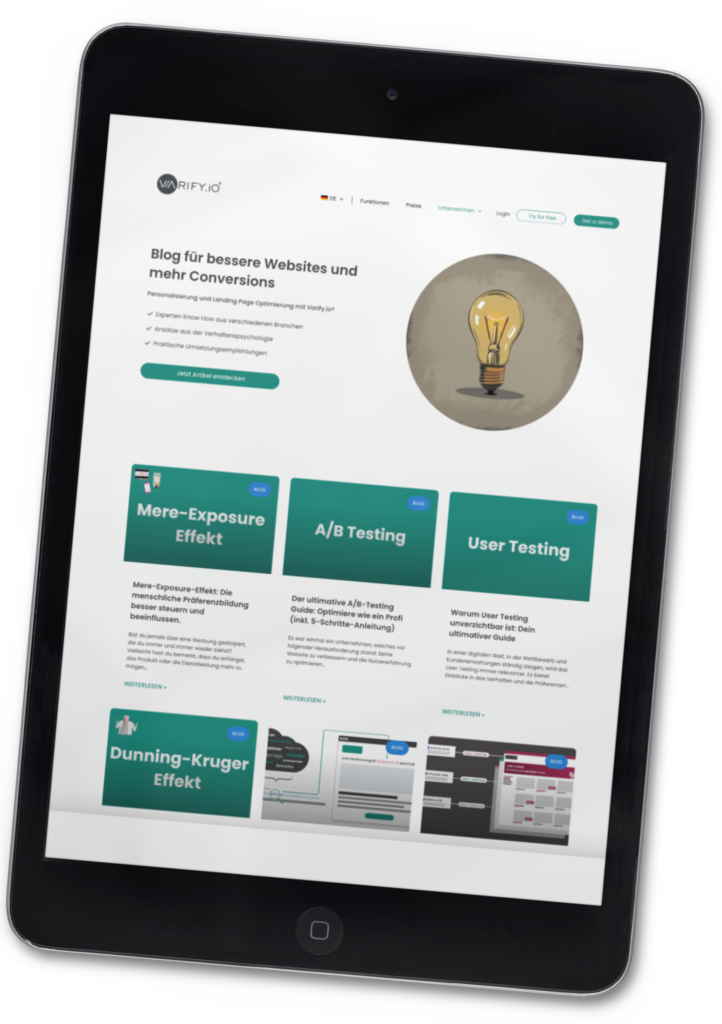
If you don't really know your users, you will miss out on their development. Personas close this gap:
They translate target groups into tangible, data-based profiles and make real user centricity possible.
Especially in the age of personalization and rising expectations, well-founded personas are the key to successful products, services and communication.

Table of contents
What is a persona? Definition and differentiation
A persona is a fictitious but data-based profile that specifically represents a typical user or customer. It describes individual characteristics such as name, age, profession, goals and challenges. This turns an anonymous target group into a tangible image of a real person.
The demarcation:
An entire market comprises all potential buyers or users. This is used to define a target group that shares certain common characteristics. A persona goes one step further and condenses these characteristics into a concrete character profile.
The concept of the persona goes back to Alan Cooper, who recognized this in the 1980s: Teams develop better products when they do not design for an anonymous mass, but for a clearly defined person.

What types of personas are there?
Not every persona follows the same approach. There are different types depending on the objective and purpose:
Buyer Persona:
Focused on the decision-making process when making a purchase. Buyer personas help to tailor marketing and sales strategies precisely to potential customers.
User Persona:
Focuses on the actual use of a product or service. User personas are particularly relevant for product development, UX and service design.
Proto-Persona:
Developed in early project phases on the basis of assumptions and initial knowledge, often without an extensive database. Proto-personas serve as hypotheses that are later validated by real user research.
Data-Driven Persona:
Derived from existing data sources such as web analytics, CRM systems or user feedback. These personas reflect real behavior patterns and are not based on assumptions.
Marketing persona vs. UX persona:
Marketing personas are aimed at motivation and purchasing behavior. UX personas focus on user behavior, frustrations and needs when interacting with the product or service.
How are personas created?
Personas do not arise from a gut feeling, but from a structured process. The most important steps at a glance:
Data collection:
Gather relevant information from user interviews, surveys, analytics and CRM data.
Pattern recognition:
Identify similar behaviors, needs and goals and cluster them into groups.
Hypothesis formation:
Based on the patterns, develop initial persona profiles that represent typical users.
Validation:
Check assumptions through further user research or data analyses and adjust the personas if necessary.
Personas are therefore not static constructs, but arise from real insights and continue to develop.
Here you can find the complete guide to persona creation.
Trends & innovations: The future of personas
Personas continue to evolve - driven by new technologies, data sources and social demands. These trends determine the future:
AI-supported persona generation:
Artificial intelligence can evaluate large amounts of data and derive more precise, dynamic personas from it. This results in more up-to-date and reliable user profiles, especially for digital products.
Data-driven personas from analytics and CRM:
Hard facts increasingly dominate instead of assumptions. Web analytics, app usage data and CRM systems provide the basis for personas that are based on real behavior, not opinions.
Adaptive personas:
Users change. Adaptive personas take this dynamic into account by adapting flexibly to new findings and developments. This means that personas remain relevant over longer periods of time.
Data protection issues and ethical challenges:
The use of personal data requires new standards. Companies must create transparency, collect data cleanly and consistently respect the privacy of users.
Conclusion
Personas are far more than just a nice extra in strategy workshops. They are a crucial building block for genuine user centricity, better products and more efficient communication. Those who take the time to develop well-founded personas create a common basis for all teams - from marketing to product development.
Instead of assumptions, real needs determine the direction. Instead of scatter loss, precisely tailored offers are created.
The better the persona, the clearer the decisions and the higher the chances of success.
The next step: those who not only create their personas but also continuously develop them will secure a real competitive advantage in the long term.
Individual references
- Nielsen Norman Group (2022): Personas: Study Guide. [Accessed on: 28.04.2025]
- Cooper, A. (1999): The Inmates Are Running the Asylum: Why High Tech Products Drive Us Crazy and How to Restore the Sanity. Sams Publishing. [Accessed on: 28.04.2025]

